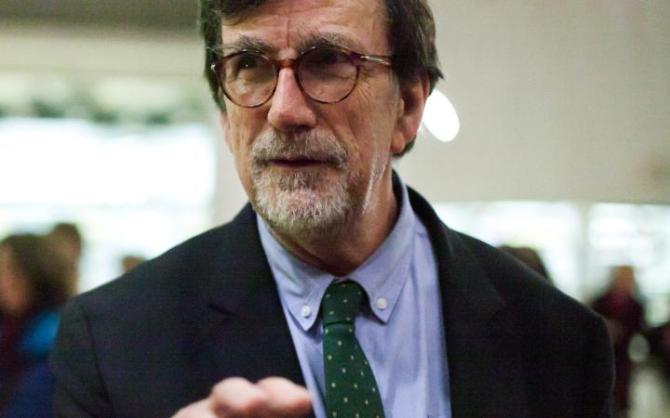
- His early work had done more than that of any other living thinker to unsettle the traditional understanding of how we acquire knowledge of what’s real
- In a series of controversial books in the 1970s and 1980s, he argued that scientific facts should instead be seen as a product of scientific inquiry. Facts, Latour said, were “networked”; they stood or fell not on the strength of their inherent veracity but on the strength of the institutions and practices that produced them and made them intelligible. If this network broke down, the facts would go with them.
- Founder of the new academic discipline of science and technology studies
- The mid-1990s were the years of the so-called science wars, a series of heated public debates between “realists,” who held that facts were objective and free-standing, and “social constructionists,” like Latour. If scientific knowledge was socially produced — and thus partial, fallible, contingent — how could that not weaken its claims on reality? Lately, however, these debates have begun to look more like a prelude to the post-truth era in which society as a whole is presently condemned to live.
- By showing that scientific facts are the product of all-too-human procedures, these critics charge, Latour — whether he intended to or not — gave license to a pernicious anything-goes relativism that cynical conservatives were only too happy to appropriate for their own ends (…) But Latour believes that if the climate skeptics and other junk scientists have made anything clear, it’s that the traditional image of facts was never sustainable to begin with.
- With the rise of alternative facts, it has become clear that whether or not a statement is believed depends far less on its veracity than on the conditions of its “construction” — that is, who is making it, to whom it’s being addressed and from which institutions it emerges and is made visible.
- In Abidjan, Latour began to wonder what it would look like to study scientific knowledge not as a cognitive process but as an embodied cultural practice enabled by instruments, machinery and specific historical conditions.
- Day-to-day research — what he termed science in the making — appeared not so much as a stepwise progression toward rational truth as a disorderly mass of stray observations, inconclusive results and fledgling explanations (…) During the process of arguing over uncertain data, scientists foregrounded the reality that they were, in some essential sense, always speaking for the facts; and yet, as soon as their propositions were turned into indisputable statements and peer-reviewed papers — what Latour called ready-made science — they claimed that such facts had always spoken for themselves.
- In the 1980s, Latour helped to develop and advocate for a new approach to sociological research called Actor-Network Theory (…) Latour had seen how an apparently weak and isolated item — a scientific instrument, a scrap of paper, a photograph, a bacterial culture — could acquire enormous power because of the complicated network of other items, known as actors, that were mobilized around it. The more socially “networked” a fact was (the more people and things involved in its production), the more effectively it could refute its less-plausible alternatives.
- Latour believes that if scientists were transparent about how science really functions — as a process in which people, politics, institutions, peer review and so forth all play their parts — they would be in a stronger position to convince people of their claims
- Whether they are conscious of this epistemological shift, it is becoming increasingly common to hear scientists characterize their discipline as a “social enterprise” and to point to the strength of their scientific track record, their labors of consensus building and the credible reputations of their researchers.
Excerpts from: Bruno Latour, the Post-Truth Philosopher, Mounts a Defense of Science, By Ava Kofman published in New York Times, full article available here
Image available here
